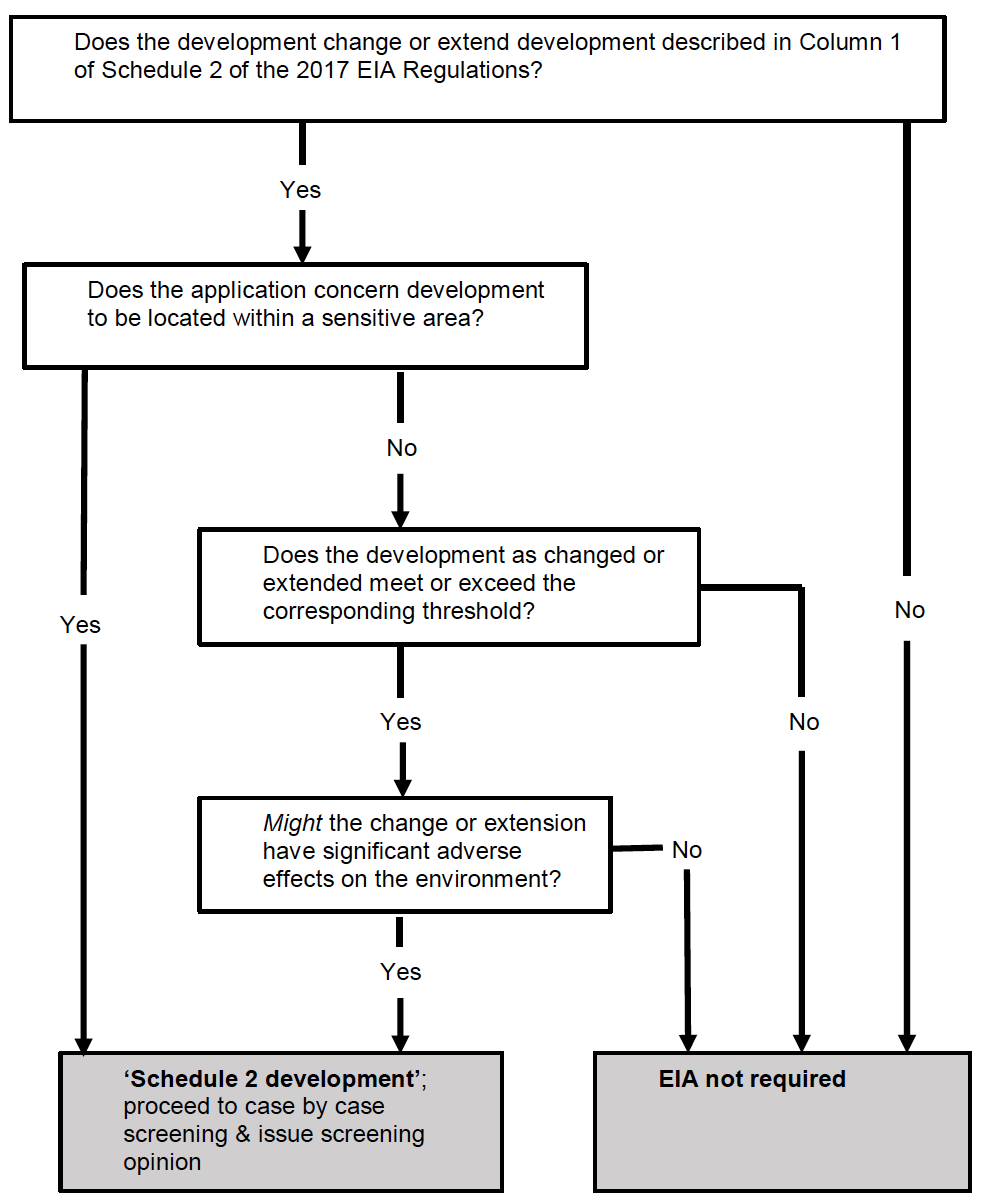Fish farming - permitted development rights: guidance
Guidance detailing the provisions of the Town and Country Planning (General Permitted Development) (Scotland) Order 1992 (as amended) which apply to marine and freshwater finfish and shellfish developments (updated April 2021).
Background
Prior notification, prior approval and withdrawal of permitted development rights
4. Permitted development rights are granted so that some types of development can be carried out without the need to submit an application for planning permission.
5. Although many permitted development rights concern development of a non- contentious nature there are some which could fall within the descriptions of Schedules 1 or 2 of The Town and Country Planning (Environmental Impact Assessment) (Scotland) Regulations 2017 (The '2017 EIA Regulations').
6. The provisions of the GPDO are such that;
a) Schedule 1 development is not permitted development. Such developments always require the submission of planning application and an Environmental Statement.
b) Schedule 2 development does not constitute permitted development unless the planning authority has adopted a screening opinion to the effect that an Environmental Impact Assessment (EIA) is not required.
7. Fish farms are identified in Column 1 of Schedule 2 in the 2017 EIA Regulations. It is important to note any change or extension to authorised Schedule 2 developments also fall within the scope of the 2017 EIA Regulations.
8. Where a change or extension to a fish farm development meets the below criteria it will be considered a Schedule 2 development;
a) the corresponding thresholds and criteria applied to the development as changed or extended are met or exceeded, and;
b) where the thresholds are met or exceeded, the change or extension may itself have significant adverse impacts on the environment;
or
the application concerns the development to be located wholly or in part in a 'sensitive area' as described in regulation 2(1) of the 2017 Regulations.[1]
9. The process of establishing whether a change or extension is a schedule 2 development in accordance with the requirements as detailed within the 2017 EIA Regulations is shown in Figure 1.

Prior notification
10. A number of permitted development rights require an operator to give formal prior notification to the planning authority before exercising such rights. Following prior notification, development may be permitted without prior approval. Alternatively a decision may be issued that requires the development to gain prior approval before being carried out. Prior notification and prior approval are distinct processes.
11. The information to be provided in writing at the time of prior notification is specific to each class of permitted development. Confirmation that written prior notification has been received should be given within 7 calendar days. The planning authority has 28 calendar days from receipt of the prior notification to issue a determination as to whether its prior approval is required to the exercise of the permitted development rights. If a determination is not issued within 28 calendar days, then the operator can proceed with the development by law.
12. The planning authority may request additional information to supplement the details provided at the time of prior notification. Failure to provide documentation in a timely manner may result in an automatic requirement for prior approval.
Prior approval
13. In certain cases, the planning authority may decide it is necessary to call in the application for prior approval. This may be to allow the planning authority to screen equipment changes for visual impacts in potentially visually sensitive areas and for them to be able to impose suitable mitigating conditions. This is particularly important in relation to National Scenic Areas (NSA's) which have been designated to ensure that they are protected from any inappropriate development. It is also a mechanism in addition to prior notification to allow the planning authority to screen a change for its potential environmental impacts as described in paragraphs 7-9.
14. The planning authority may also call in an application for prior approval in certain other circumstances. One example may be if prior notification for permitted development in accordance with the requirements of Class 21A is made where the installation of larger size replacement cages is proposed. The situation may dictate that prior approval is required to allow further consideration to take place, in collaboration with statutory consultees as appropriate, to ensure that any potential impacts of the development are sufficiently considered.
15. If the planning authority considers that prior approval is required conditions may be imposed when prior approval is given. Prior approval may be withheld. There is a right of appeal against refusal of prior approval and against any conditions attached to prior approval. As is the case for planning applications, there is no set time limit for a planning authority to issue a prior approval decision. If prior approval is not issued within two months then the applicant has the option, if they wish, to appeal to Scottish Ministers on the grounds of non–determination.
16. Where an application for prior notification or prior approval is received which the authority considers relates to schedule 2 development which may have significant effects on the environment, and those effects have not previously been identified, the authority must adopt a screening opinion.
17. Requests to the planning authority for a screening opinion can be made alongside any prior notification or application for prior approval which may be required under the particular class of permitted development rights. Where the screening opinion identifies that an EIA is required – permitted development rights are withdrawn.
18. Developers may wish to establish at an earlier stage whether or not an EIA and a planning application will be required. Further information on the relationship between the EIA Regulations and permitted development rights can be found in Scottish Government Planning Circular 1/2017.
Contact
Email: fishfarmreview@gov.scot
There is a problem
Thanks for your feedback